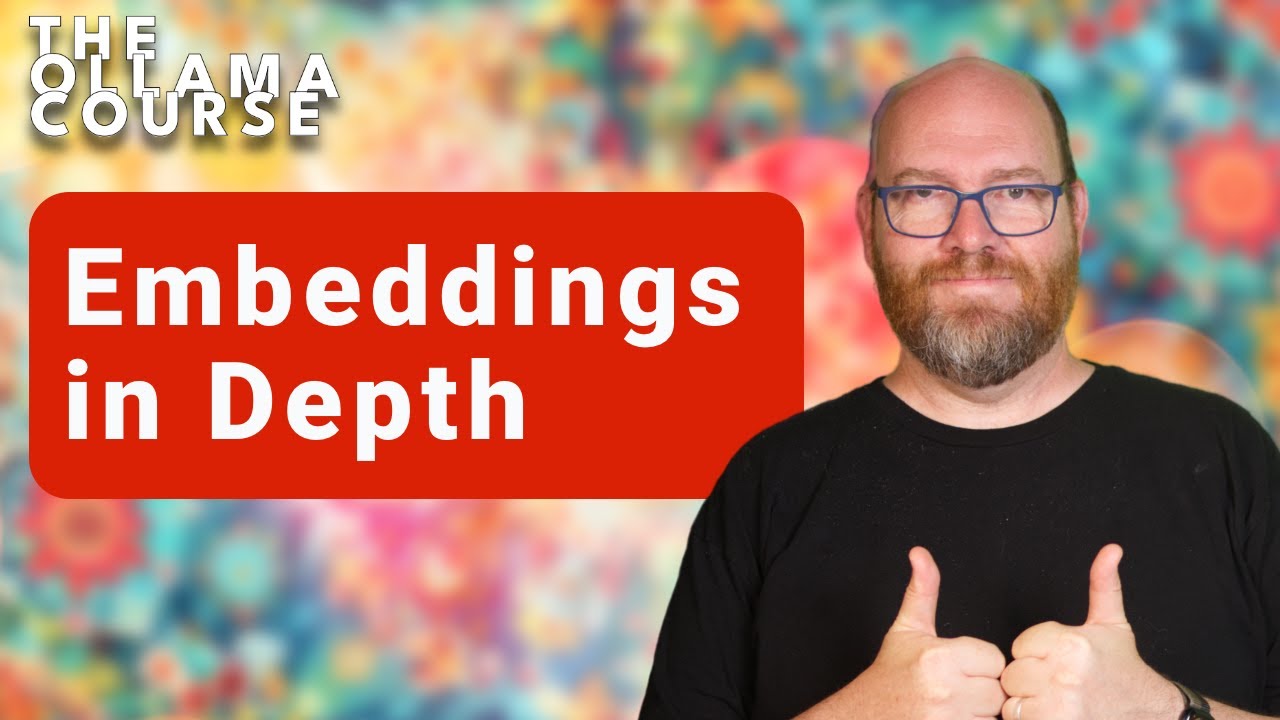In the video “Embeddings in Depth,” the presenter explains how traditional search engines struggle with understanding user intent and language nuances, introducing embeddings as a solution that captures the meaning behind words. The video covers the creation and utility of embeddings, including their storage in vector databases, the use of cosine similarity for comparison, and practical examples of generating embeddings using the Ollama API, while encouraging experimentation with different models and parameters for optimal results.
In the video “Embeddings in Depth,” part of the Ollama Course, the presenter discusses the limitations of traditional search engines that rely on exact text matches. When users search for terms like “best Italian restaurants,” search engines typically return results that closely match the query. However, this method often fails to capture the nuances of language, such as synonyms, contextual meanings, and user intentions. To address these shortcomings, the video introduces the concept of embeddings, which allow for searches that understand the meaning behind the words rather than just the words themselves.
The video explains that embeddings are typically stored in a vector database, and their creation can either be initiated by the vector store or by the user. The actual embedding is generated by an embedding model, which can vary in performance. The presenter emphasizes that while any model can create embeddings, using a model specifically designed for this purpose yields better and faster results. An embedding consists of an array of floating-point numbers, with the example given of a 768-dimensional embedding for a short phrase. This dimensionality remains consistent regardless of the length of the text being embedded.
Once a collection of embeddings is created, the video highlights the utility of cosine similarity, a method for calculating the distance between vectors to determine their similarity. The presenter notes that all vectors must be of the same length for comparison, which means that if a different embedding model is used, previously created embeddings must be regenerated. The process involves preparing a vector database by embedding chunks of source text and then comparing the query embedding to find the most relevant information.
The video also covers how to create embeddings using the Ollama API, detailing the various endpoints available for this purpose. The recommended endpoint is /api/slmed, which allows users to embed either a single string or an array of strings. The presenter provides examples of how to use the API in both JavaScript and Python, demonstrating the ease of generating embeddings. A practical example is presented where the effectiveness of different embedding models is compared using a document about the Incuba LM project, focusing on how well each model answers specific questions.
Finally, the video concludes by emphasizing the experimental nature of working with embeddings. The presenter encourages viewers to explore various parameters, such as chunk sizes and similarity algorithms, as there is often no single best approach. The results of the embedding comparisons reveal varying levels of effectiveness among the models, highlighting the importance of experimentation in achieving optimal results. The video wraps up by inviting viewers to subscribe for more content and expressing hope that the course is beneficial for their understanding of Ollama and embeddings.
